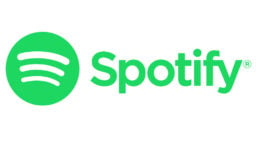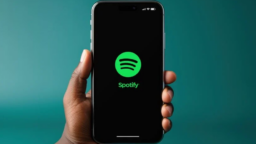The major labels appear to be on the verge of successfully lobbying Spotify to put some releases exclusively on its paid-for premium tier.
Until last month, Taylor Swift was the most well-known act to refuse to place her album, 1989, on the service.
She later removed her entire catalogue from Spotify, suggesting that “music should not be free” and predicting that “individual artists and their labels will someday decide what an album’s price point is”.
Then along came Adele.
The British superstar’s record-breaking third album, 25, is still not on Spotify after being released on November 20, although lead single Hello is available and has been streamed over 230m times.
This week it was Coldplay’s turn to snub Spotify – although not to quite the same extent.
Despite being on paid for streaming services such as Apple Music and TIDAL, the band’s A Head Full Of Dreams will land on Spotify’s free and premium tiers this Friday (December 11), one week after release.
Against this backdrop, demands from significant players in the industry for Spotify to drop its ‘everything freemium’ rule are getting louder.
One leading label exec simply told MBW earlier today: “It’s time. Daniel Ek needs to start playing ball.”
Now, according to a new report from the Wall Street Journal, Spotify is ‘caving in’ to demands for certain artists to be able to keep their records off Spotify’s free tier.
The newspaper says: “In private talks, Spotify has told music executives that it is planning to allow some artists to start releasing albums only to its 20 million-plus subscribers, who pay $10 a month, while withholding the music temporarily from Spotify’s 80 million free users.”
Spotify has handed a carefully-worded statement to MBW, in which it doesn’t quite deny the report – but clearly stresses that it’s still committed to ‘freemium’ as a model in some form.
“We are 100 percent committed to our model because we believe that a free, ad-supported tier combined with a more robust premium tier is the best way to deliver music to fans, create value for artists and songwriters, and grow the industry,” said Jonathan Prince, Spotify’s Global Head of Communications and Public Policy.
“In that context, we explored a wide range of promotional options for the new Coldplay album and ultimately decided, together with management, that Coldplay and its fans would best be served with the full album on both free and premium this Friday.”
MBW understands that the latest internal Spotify figures show that the platform now has close to 100m active users, and 25m+ paying customers around the world.
Spotify certainly has the technology to allow some artists to place their material on premium-only.
Earlier this year, a new track from UK rock band Muse ended up exclusively on the paid-for level of Spotify.
The service later said in a statement: “Spotify and Sony PlayStation are partnering on a campaign to promote Muse’s new album, Drones, to music fans all over the world,” explained a Spotify spokesperson.
“Part of the campaign provides premium subscribers with additional access to the bonus track.
“Access to the track should be seen as a unique offer within a wider bespoke marketing campaign with Sony PlayStation, rather than a broader shift in our content approach.”
The so-called ‘freemium wars’ were brought into public view at the very start of 2015, when Universal Music Group boss Lucian Grainge raised concern with services that offered a full catalogue of free, on-demand streaming music.
“The ad-funded part of the music ecosystem – that’s on-demand, ad-funded – as I’ve said before, is not something that is particularly sustainable in the long-term,” said Grainge.
His comments were later backed up by Sony Music Entertainment boss Doug Morris, who told Hits: “Basically, I equate ‘free’ with the decline of the music business.”
Although both Sony and Universal were (and likely still are) locked in licensing renegotiations with Spotify when their statements were made, they weren’t solely targeted at Daniel Ek’s business.
A major justification from the Spotify camp for refusing to place some releases on premium-only has always been YouTube, and the fact many ‘windowed’ music releases end up on the video site as fan uploads.
However, the record industry has made a fist of circumnavigating YouTube this year, with One Direction’s team deliberately pushing fans to Spotify and Apple Music for comeback single Drag Me Down in August.
And YouTube itself has shown some kind of willingness to offer a premium tier, by launching YouTube Red in the US in October.
Meanwhile, SoundCloud – another completely free-to-the-user streaming service – has announced plans to launch a subscription tier, while this morning brought some interesting news from another non-premium music platform.
Vevo, the video-on-demand site part-owned by Sony Music, Universal Music and Google, has just acquired ShowYou, an online video platform which recently added tools to enable viewers to pay subscriptions or one-off transactions.
And over in India, Saavn – a streaming service, like Spotify, perhaps better known for its free tier – popped Coldplay’s new album exclusively on its paid for Saavn Pro offering last week.
Adding to the enemies of Spotify’s free tier, here comes Pandora.
The streaming ‘radio’ firm is odds-on to launch its own Spotify rival next year as a fully interactive streaming service.
Earlier this month, Pandora CEO Brian McAndrews wrote a controversial op/ed for Business Insider, in which he slammed services that offer “not just a free trial, but free all the time”.
McAndrews added: “I would argue that an on-demand on-ramp is one thing; a permanent, free on-demand highway is another. The first is good for the long-term health of the music industry. The second is not.”
When vociferously defending the ‘everything freemium’ model last year in the wake of Taylor Swift’s defection, Daniel Ek said:
“Here’s the overwhelming, undeniable, inescapable bottom line: the vast majority of music listening is unpaid.
“If we want to drive people to pay for music, we have to compete with free to get their attention in the first place.”
It’s looking increasingly likely Spotify’s going to have to do so while accepting that it’s not going to be able to give some music away for nothing.Music Business Worldwide





